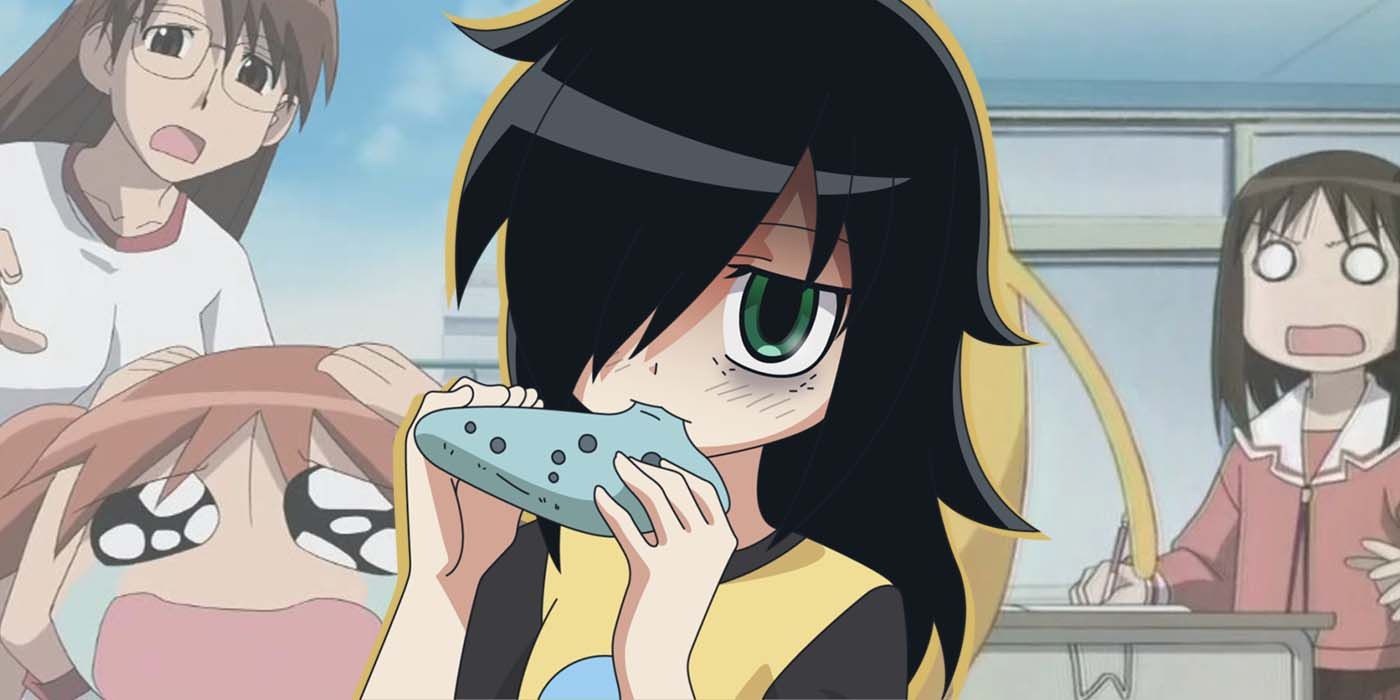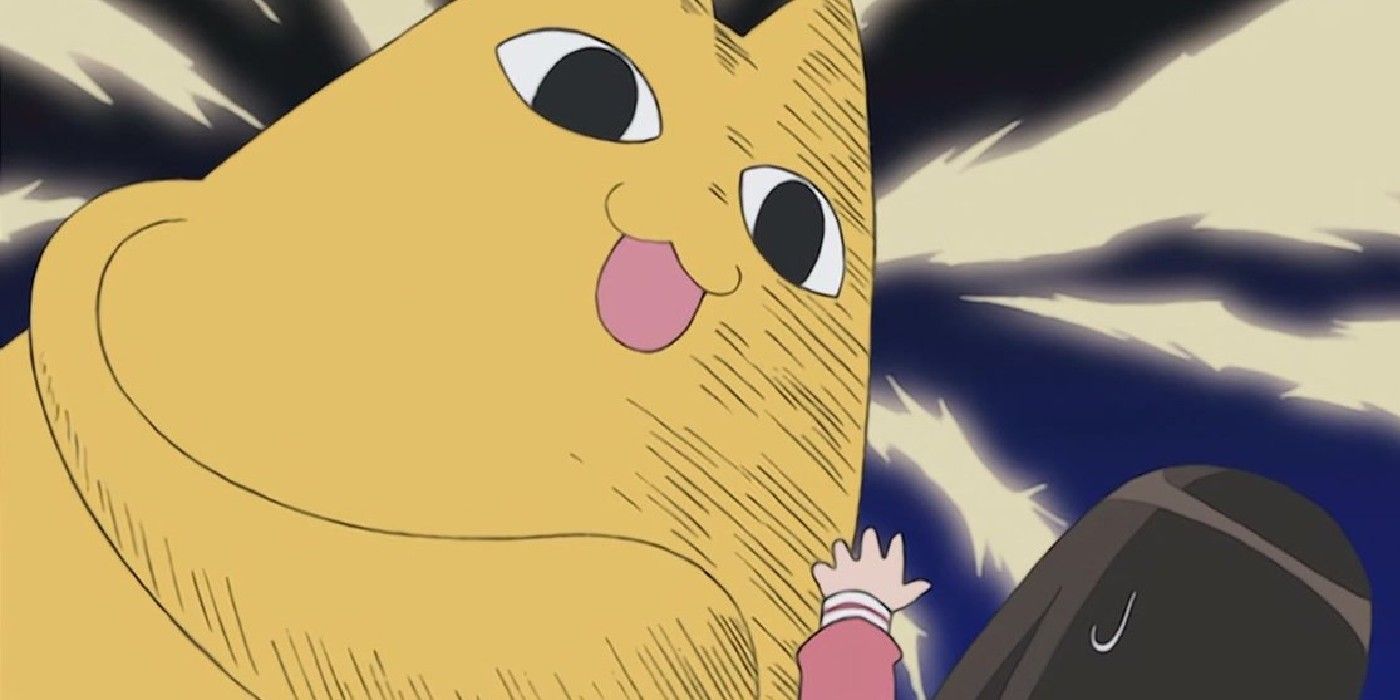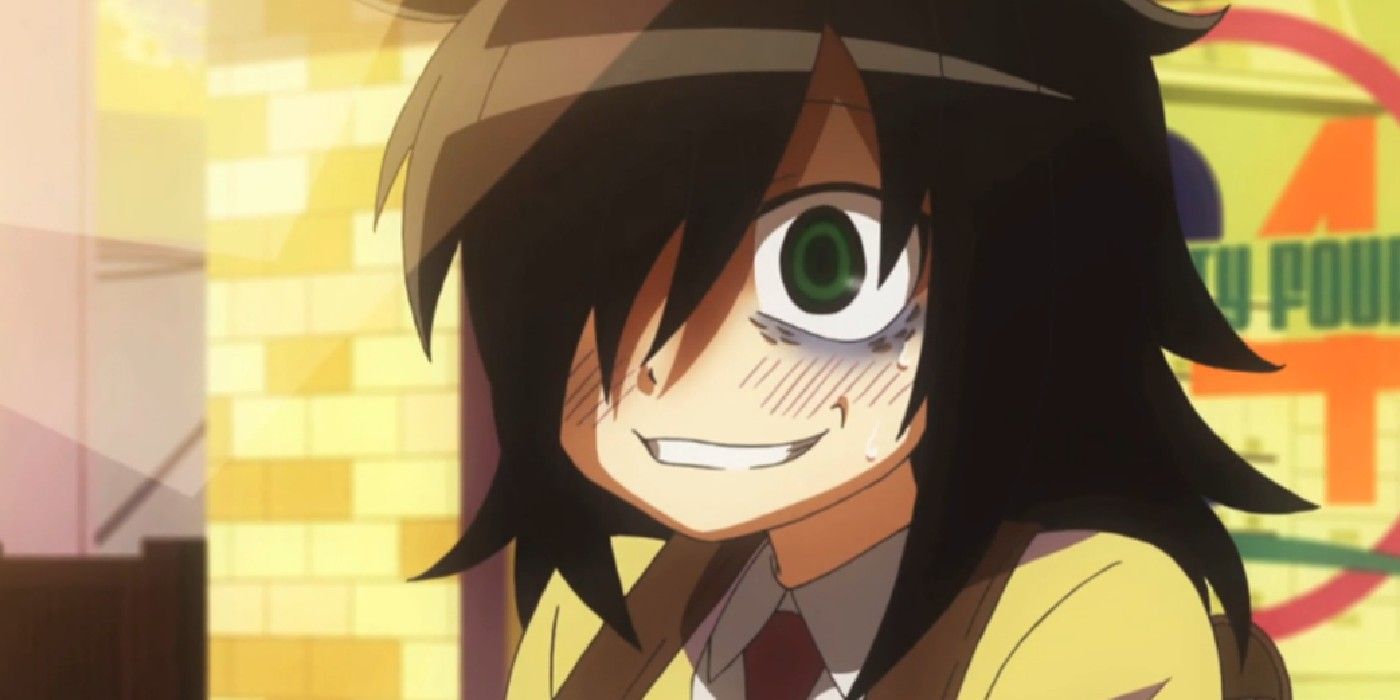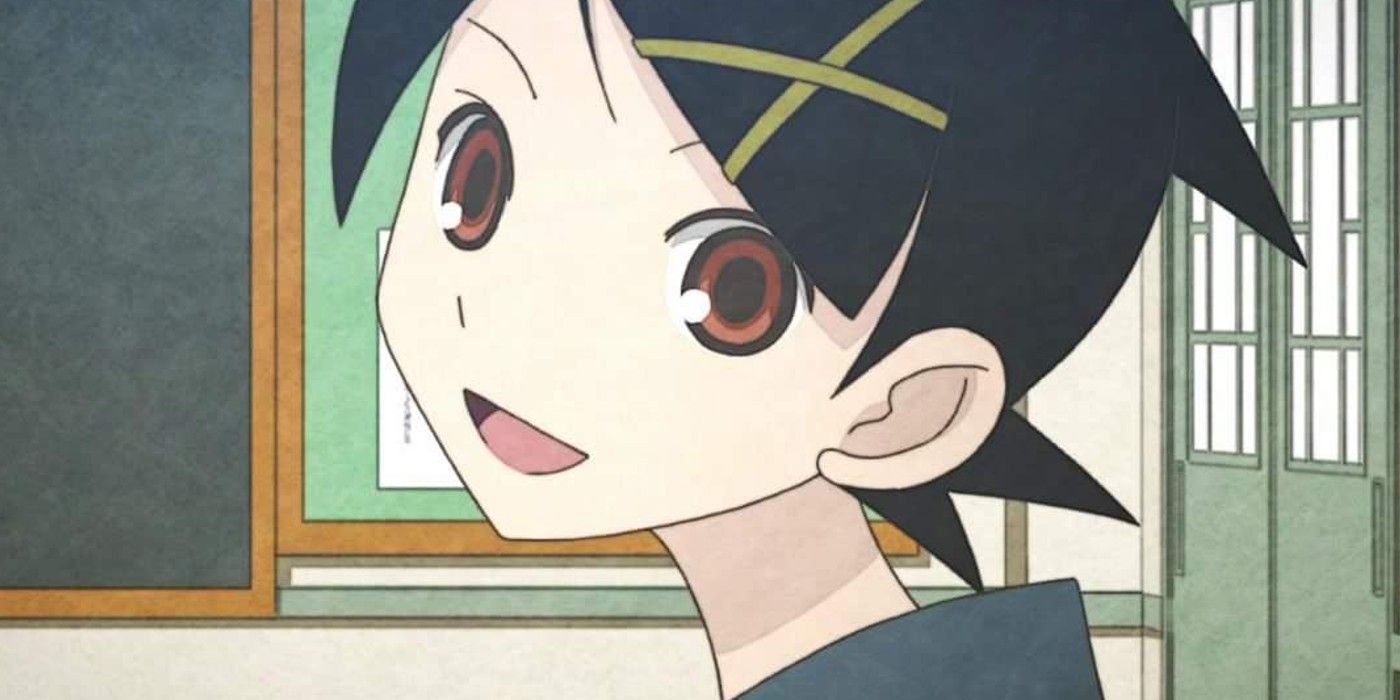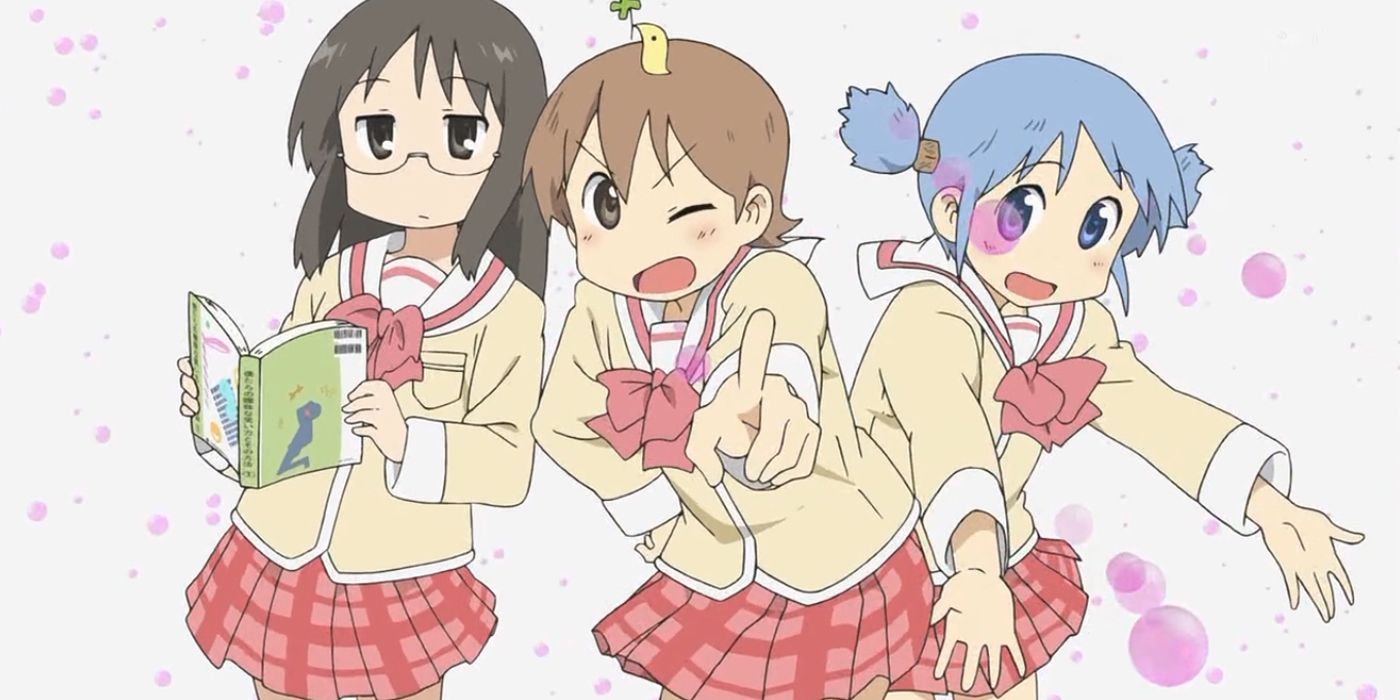Anime has a reputation of indulging in slapstick comedy. Over-the-top facial expressions, screaming out punch lines, and rampant cartoon violence are common tropes that are utilized in most comedy anime, especially older series. However, there's another sub-trope of comedy that may better suit this form of media.
Black comedy tends to work better for anime for multitude of reasons. These series continuously employ satire and black humor throughout, proving that it’s entirely possible to be both genuinely funny while at the same time saying something about current events or social conventions, making their comedy successful on more than a surface level.
Older anime, like comedy series Azumanga Daioh had a more classic, cartoonish look to them. With larger eyes, less realistic proportions, and hairstyles that defy the laws of gravity, classic character designs of that era fit in well with exaggerated, over-the-top facial expressions. This is when comedy anime utilizing slapstick comedy truly thrived. Everything from sound effects, voice acting, background music, and even the punchlines themselves were always loud and bombastic.
Modern anime has undertaken a more realistic look to its characters, with only children's anime sticking more closely with the more cartoonish style of its predecessors. And with its more modern look comes more modern expressions. When a punchline is dropped, characters are less likely to find their heads suddenly growing three sizes and are more likely to just react realistically. Maybe with a witty quip or just an unamused look, but nothing as loud and expressive as the slapstick characters of old, making for at times lackluster reactions.
Most dark comedy anime remain grounded with some level of realism, so the lack of cartoonish actions and expressions doesn't take away from their punchlines. This isn't to say that black comedy anime is exempt from that as well. While slapstick comedies often rely on physical gags, black comedy anime tend to rely more on jokes that draw from real-life experiences, particularly from the more popular titles.
Watamote is a perfect example of this balance. Punchlines often rely on Tomoko's struggles with social anxiety that many viewers may have encountered themselves. Tomoko herself doesn't fall victim to any physical harm, rather, emotional damage, as a result of her failed attempts at becoming popular and making friends at school. Her expressions can be cartoonish and exaggerated at times, but for the most part, the show is grounded in a level of realism that most slapstick comedy can't achieve. However, there are times that the realism can get a little too real, making the show a little difficult to watch for those that can really relate to Tomoko's situation.
That sense of realism is also where most of the anime's humor stems from. When Tomoko tries and fails to make new friends, people don't make silly faces or deliver silly quips. They just move on with their lives, as if they don't notice Tomoko at all, leaving her to fall victim to self-depreciating humor time and again. Even if the characters were to respond in the way that most slapstick anime characters would, Watamote would risk coming off as less funny and mean-spirited. It's awkward and sometimes cringe-inducing, but that's what ultimately makes Tomoko such a relatable character.
Sayonara Zetsubou Sensei is on the opposite end of the spectrum, as it is a very strange and zany show that relies on parodying popular tropes and character archetypes in anime. Not a single one of the characters are portrayed in a realistic light as they're all meant to embody a particular stereotype. Despite its zaniness, the show maintains a very simplistic art style, relying more on the characters' personalities to set themselves apart rather than their designs.
The characters do yell and overreact, but they still don't make the kind of cartoony expressions one would find from a slapstick anime from the 90s and early 2000s. In that sense, the show ends up relying more on its clever writing instead of relying too heavily on a character's expressions to deliver a funny line or joke. It also certainly helps that the show has managed to cast a large group of talented voice actors to bring the characters to life, as well.
There are still some very good modern slapstick anime like Nichijou and Daily Lives of High School Boys, but with the current style of anime, black comedies work better. They're relatable, sometimes outlandish, and most importantly, they're genuinely funny.

